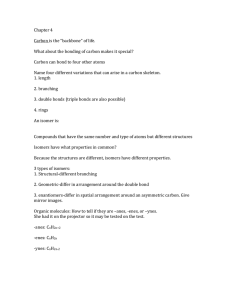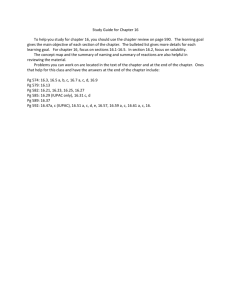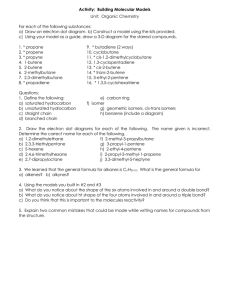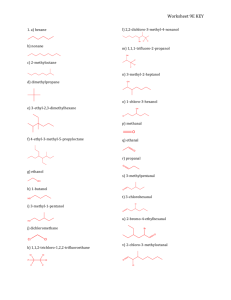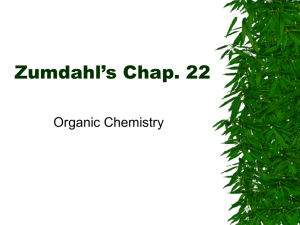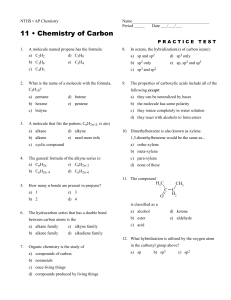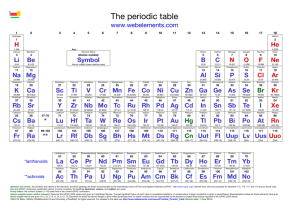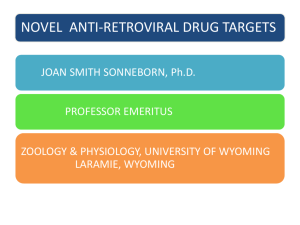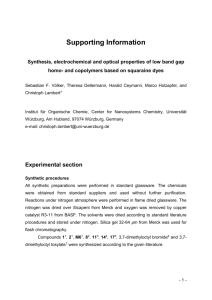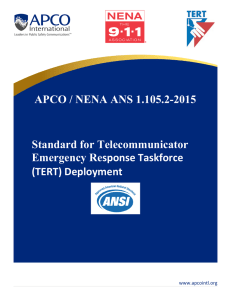+1 chemistry
advertisement
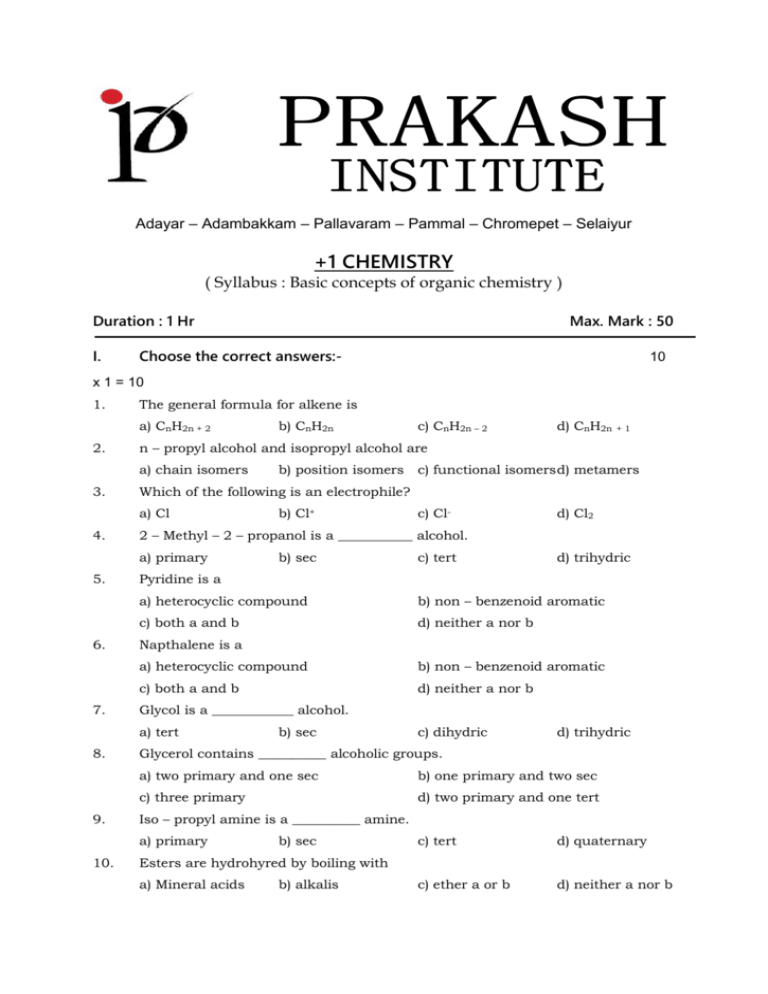
Adayar – Adambakkam – Pallavaram – Pammal – Chromepet – Selaiyur +1 CHEMISTRY ( Syllabus : Basic concepts of organic chemistry ) Duration : 1 Hr I. Max. Mark : 50 Choose the correct answers:- 10 x 1 = 10 1. The general formula for alkene is a) CnH2n + 2 2. 6. 7. 9. c) functional isomers d) metamers b) Cl+ c) Cl- d) Cl2 b) sec c) tert d) trihydric a) heterocyclic compound b) non – benzenoid aromatic c) both a and b d) neither a nor b Napthalene is a a) heterocyclic compound b) non – benzenoid aromatic c) both a and b d) neither a nor b Glycol is a ____________ alcohol. b) sec c) dihydric d) trihydric Glycerol contains __________ alcoholic groups. a) two primary and one sec b) one primary and two sec c) three primary d) two primary and one tert Iso – propyl amine is a __________ amine. a) primary 10. b) position isomers Pyridine is a a) tert 8. +1 2 – Methyl – 2 – propanol is a ___________ alcohol. a) primary 5. d) CnH2n Which of the following is an electrophile? a) Cl 4. c) CnH2n – 2 n – propyl alcohol and isopropyl alcohol are a) chain isomers 3. b) CnH2n b) sec c) tert d) quaternary c) ether a or b d) neither a nor b Esters are hydrohyred by boiling with a) Mineral acids b) alkalis II. Answer any ten of the following:- 10 x 2 = 20 16. Define organic chemistry. 17. What is catenation? 18. What are functional groups? Give examples. 19. Write the common name and IUPAC name of CH3 – CH – CH2 – OH CH3 20. Write the possible isomers for C2H6O. 21. Give the structure and IUPAC name for isopropyl chloride. 22. Write the possible isomers for dichloro benzene. 23. What are the raw materials for the manufacture of terylene? Write the reaction. 24. What are the free radicals and their types. 25. Write the common and IUPAC names of COOH COOH 26. Write the structure and IUPAC name of ethylmethyl amine. 27. Write the common and IUPAC name of CH3CHO. 28. Write the common name and structure of 2 – methoxy propane. III. Answer any four questions:- 29. What are the characteristics of homologous series? 30. How are the organic compounds classified? 31. a) What are alcohols. How are they classified. Give examples. b) What are amines. How are they classified. Give examples. 32. Explain the types of isomerism with suitable examples. 33. Explain the three types of substitution reactions with examples. 34. Write a short notes on a) Aldol condensation. b) Clemmenson reduction c) Polymerisation. ALL THE BEST 4 x 5 = 20
